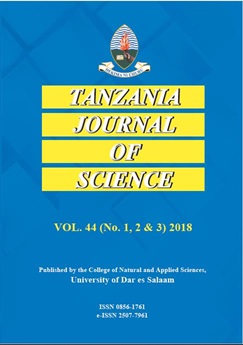Phytoremediation Potential of Four Heavy Metals in Soil by Chromolaena odorata (L.) King & Robinson at the Phytotoxicity Screening Benchmarks
Abstract
The remediative capacity of Chromolaena odorata with respect to heavy metal induced growth-stress was investigated. This was with a view to providing information on the adaptive mechanisms adopted by the test plant during the phytoremediation of selected heavy metals such as copper, manganese, zinc and cadmium. Stems of C. odorata were planted in soils polluted with Mn, Zn, Cd, and Cu at the ecological screening benchmark (ESB) of 50 mg/kg (Mn and Zn), 4 mg/kg (Cd) and 100 mg/kg (Cu) of metal per kilogram of soil, in varying concentrations of 0 ESB (control), 1 ESB, 3 ESB and 5 ESB. After the exposure of C. odorata to heavy metals for 3 months, results showed that the plant accumulated more Zn in the roots than in both leaves and stems put together in the present study. This, points to Zn exclusion. Accumulation of metal occurred generally in the intermediate and younger leaves; the older leaves were senesced. The totality of heavy metals (HM) accumulated by plant at each time of observation was always below phytotoxicity benchmark. This suggests HM avoidance, or perhaps one of several reasons for plant survival. At all times, it was observed that the totality of HM accumulated in all the plant parts put together was always below ESB value at each time.
Keywords: Chromolaena odorata; heavy metal; remediation; phytotoxicity; phytoscreening;


